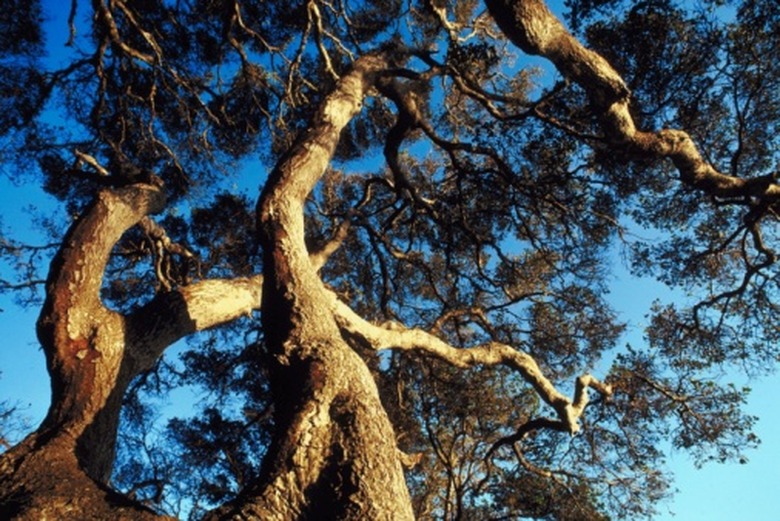My Live Oak Is Losing Leaves
Live oak (Quercus virginiana) is enjoyed for its sprawling, shade-providing habit, attractive trunk and bark and longevity. Although live oak is sometimes referred to as the "evergreen oak," it is not actually an evergreen. A live oak naturally loses leaves in spring to make way for emerging new leaves.
Live oak (Quercus virginiana) is enjoyed for its sprawling, shade-providing habit, attractive trunk and bark and longevity. Although live oak is sometimes referred to as the "evergreen oak," it is not actually an evergreen. A live oak naturally loses leaves in spring to make way for emerging new leaves. In addition to this normal seasonal leaf drop, live oaks may lose leaves in response to a number of damaging agents.
Normal Annual Leaf Drop
In late winter to early spring, live oak trees may begin to appear sickly, with leaves turning yellow or developing a splotchy appearance before dying and dropping. To determine if the tree is undergoing normal leaf drop, carefully examine the area on the branch near the base of the dying leaves. If small, new buds are present, the tree is healthy and normal. If there are no apparent new buds, bend the branch. If it is brittle, snaps and appears brown in the middle rather than greenish-white, the branch is probably dead. Some dieback is normal. However, if more than 10 percent of the branches on a tree are dead, the oak may be suffering from a serious problem.
- Live oak (Quercus virginiana) is enjoyed for its sprawling, shade-providing habit, attractive trunk and bark and longevity.
- In late winter to early spring, live oak trees may begin to appear sickly, with leaves turning yellow or developing a splotchy appearance before dying and dropping.
Oak Wilt
Unlike normal annual leaf drop, which occurs in late winter or early spring, oak wilt symptoms are typically first observed in summer. Oak wilt, caused by the fungus Ceratocystis fagacearum, is spread through connected root systems or by beetles. Oak wilt often causes veinal necrosis, which is when areas next to the leaf veins turn brown while tissue farther from veins remains green. Leaves drop and infected trees usually die. Remove and destroy infected trees to prevent further spread of the oak wilt fungus.
Fungal Leaf Spots
A number of fungal pathogens may infect the leaves of a live oak. Leaves generally develop spots, may become discolored and often drop prematurely. Sometimes leaves drop normally in spring while simultaneously showing leaf spots caused by a fungus. Wet, cloudy weather favors fungal spread. Control the impact of fungi by pruning branches selectively to improve air circulation around leaves. Rake and dispose of fallen leaves.
- Unlike normal annual leaf drop, which occurs in late winter or early spring, oak wilt symptoms are typically first observed in summer.
- Oak wilt often causes veinal necrosis, which is when areas next to the leaf veins turn brown while tissue farther from veins remains green.
Root Rot
Fungal pathogens that cause root rots like the shoestring root rot may attack the live oak. These infections are often difficult to diagnose and control, often appearing first when leaves are small, chlorotic and drop prematurely. To confirm the presence of rot, a root sample typically must be examined for symptoms. Root rot is less likely to bother healthy trees in well-drained soils.
Insect Problems
Although live oaks are typically pest free, a handful of pests can cause or contribute to tree stress and defoliation. Potential live oak pests include mites, scales, aphids, tent caterpillars, cankerworms and boring insects. Pests are more likely to infest and cause the most damage on already-stressed or weakened trees. Minimize pest problems by using proper cultural practices. Provide newly planted trees and trees suffering under drought conditions with adequate water.
- Fungal pathogens that cause root rots like the shoestring root rot may attack the live oak.
- Although live oaks are typically pest free, a handful of pests can cause or contribute to tree stress and defoliation.
